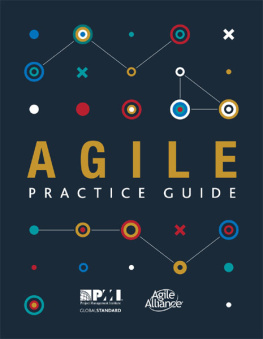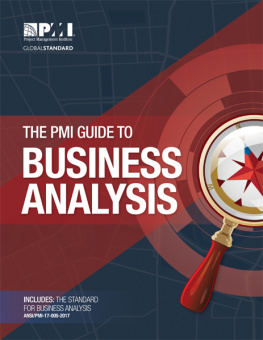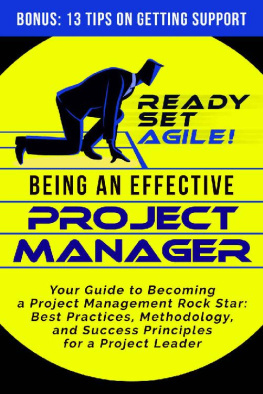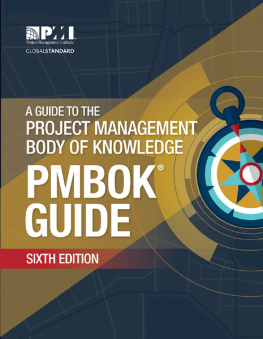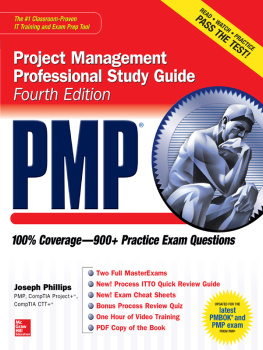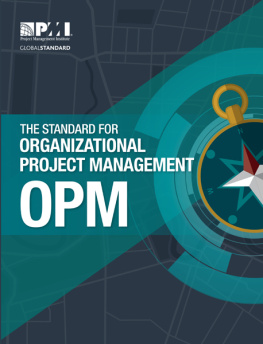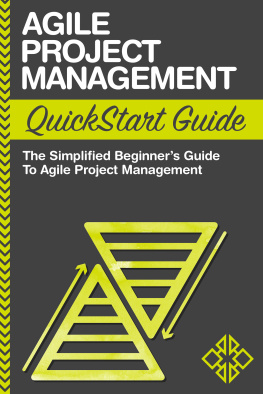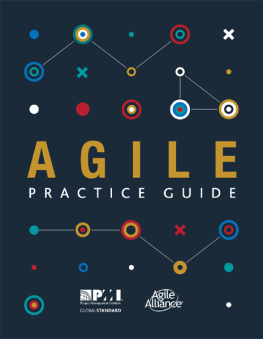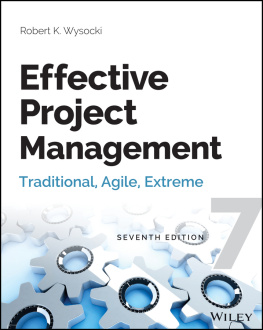APPENDIX X1
SIXTH EDITION CHANGES
The purpose of this appendix is to provide an overview of the changes made to A Guide to the Project Management Body of Knowledge (PMBOK Guide)Fifth Edition to create the PMBOK GuideSixth Edition.
X1.1 SCOPE OF UPDATE
The approved scope for the PMBOK GuideSixth Edition includes:
- Review the following and determine whether the material will be included or excluded in the new editions, and track the disposition:
- All material relevant to Sections , Annex A1, and the Glossary that was deferred during the development of A Guide to the Project Management Body of Knowledge (PMBOK Guide)Fifth Edition
- All comments and feedback relevant to Sections , Annex A1, and the Glossary of A Guide to the Project Management Body of Knowledge (PMBOK Guide)Fifth Edition that have been received by PMI since the initial development and publication.
- Review, interpret, and ensure appropriate alignment with ISO 21500 in the development of the standard.
- Ensure harmonization with any other relevant PMI foundational standards.
- Consider the project manager role delineation study results and other PMI research studies for incorporation as appropriate.
- Review, conduct, and analyze research for significant additions, deletions, and changes to the Sixth Edition and possibly for strategic input to future editions.
With that directive in mind, the update team focused on bringing greater consistency and clarity by refining and standardizing the processes, inputs, tools and techniques, and outputs.
X1.2 RULES FOR HARMONIZATION BETWEEN GLOSSARY TERMS AND THE PMI LEXICON OF PROJECT MANAGEMENT TERMS
To ensure that terms used in the PMBOK Guide align with the PMI Lexicon of Project Management Terms and harmonize with other relevant PMI standards, the Sixth Edition followed these business rules:
- For terms found in both the PMBOK Guide and the PMI Lexicon, the definition from the PMI Lexicon is used.
- Where terms used in the PMBOK Guide are not found in the PMI Lexicon but are found in other relevant PMI standards, the definitions of the terms should be identical. If the definitions do not align with the respective standards, the term is elevated to the PMI Lexicon team for assistance in creating an acceptable common definition.
X1.3 RULES FOR HANDLING INPUTS AND OUTPUTS
The following business rules were used to provide consistency in the order and information within the inputs and outputs for each project management process:
- Inputs are any documents that are key to the process.
- Outputs should become an input to another project management process unless the output is a terminal output or embedded within another input such as project documents.
- Inputs should come from an output from another project management process unless the input comes from outside the project.
- When specific project documents are identified the first time, they are listed as a specific output. Subsequently, they are listed as project documents updates in the output list, and described in the section narrative.
- When any project document is an input, the term project documents is listed and the specific project documents are described in the section narrative.
- Project Management Plan Rules:
- For those planning processes that create a subsidiary plan, the project charter is the first input and the project management plan is the second input.
- The process that creates a component of the project management plan lists the component specifically. Subsequently, components are listed as project management plan updates in the output list, and described in the section narrative.
- When the project management plan serves as a process input, specific components of the project management plan that may be considered are described in the section narrative.
- If the project charter is an input, it is the first input.
- When the project management plan is an input or output, the subsidiary management plans are listed in the order of the sections in the PMBOK Guide where they are produced as an output, followed by baselines and then any other plans.
- Project documents are listed in alphabetical order.
- Enterprise environmental factors and organizational process assets are listed last in that order.
- When updates are an output they are listed in the following sequence:
- Project management plan updates,
- Project documents updates, and
- Organizational process assets updates.
X1.4 RULES FOR HANDLING TOOLS AND TECHNIQUES
The Sixth Edition endeavored to reduce the number of tools and techniques by focusing on those that are currently used on most projects most of the time. Based on academic and market research a number of tools and techniques were eliminated. In order to reduce repetition a tool or technique is described the first time it is listed and subsequent processes using that tool or technique refer back to the earlier description.
The Sixth Edition grouped some of the commonly used tools and techniques by their intent. Not all tools and techniques fall within a group, but for those tools or techniques that are part of a group, the group is listed and then examples of tools and techniques in that group are described in the narrative. The tools and techniques groups are:
- Data gathering,
- Data analysis,
- Data representation,
- Decision-making,
- Communication skills, and
- Interpersonal and team skills.
identifies all the tools and techniques in the PMBOK Guide by group, where appropriate, and lists the processes where they are used.
X1.5 PROJECT MANAGEMENT PLAN
Not every component of the project management plan is created in a separate process. Such components are considered to be created in the Develop Project Management Plan process. They include the change management plan, configuration management plan, performance measurement baseline, project life cycle, development approach, and management reviews.
X1.6 SECTION 1INTRODUCTION
The Introduction section was significantly rewritten. Introductory information about projects, programs, and portfolios that aligns with other PMI foundational standards remains. However, there is new information on project and development life cycles, project phases, and phase gates. This information provides a high-level overview on selecting development approaches from predictive, iterative, incremental and adaptive, based on the nature of the project. New information on business documents includes the business case and the benefits management plan.
X1.7 SECTION 2THE ENVIRONMENT IN WHICH PROJECTS OPERATE
The content of was significantly rewritten. Information on organizational process assets and enterprise environmental factors remains. However, there is new content on governance, management elements, and organizational structure types.
X1.8 Section 3THE ROLE OF THE PROJECT MANAGER
This is a new section that outlines the project manager's role on the team. It includes information on the project manager's sphere of influence and competencies. PMI's Talent Triangle is discussed with its emphasis on strategic and business management skills, technical project management skills, and leadership skills. Leadership styles and personality are also discussed as part of this section. The final part of this section focuses on the project manager as an integrator.

